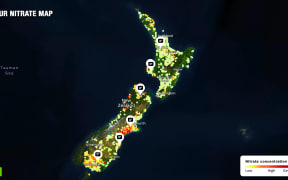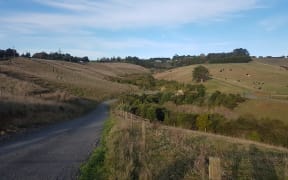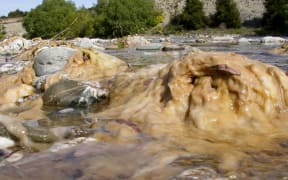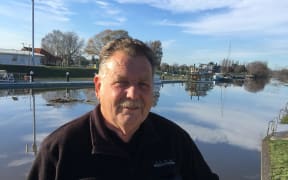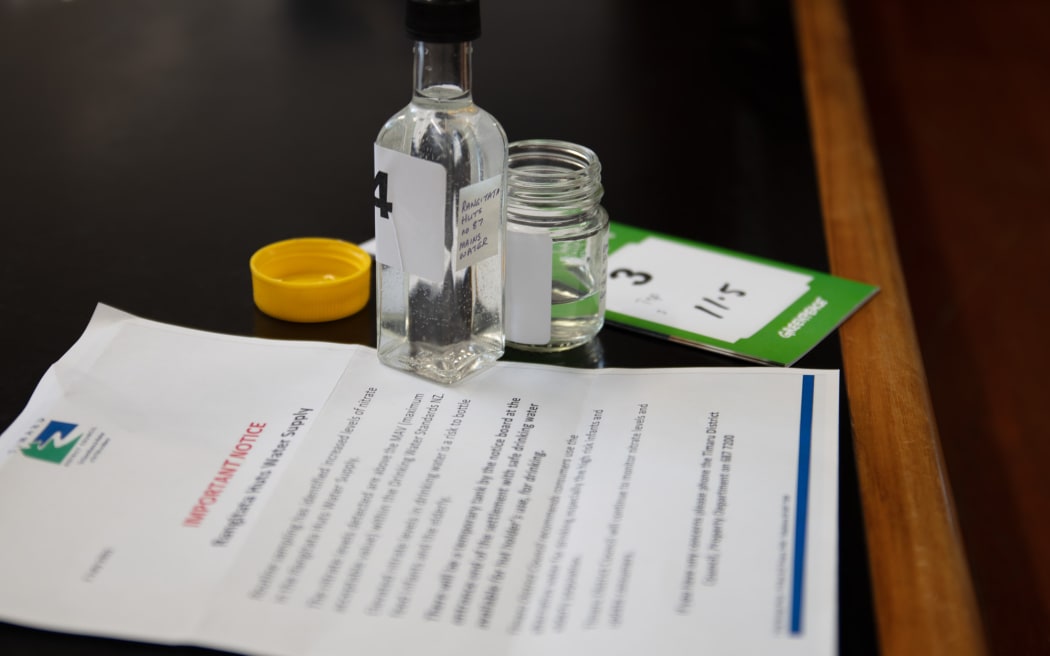
Over the past three years, Greenpeace has held over a dozen free nitrate water testing community events. Photo: Zoe Deans via Greenpeace Aotearoa
There is growing evidence the maximum allowable level of nitrate in drinking water should be halved, a Canterbury public health expert says.
It comes off the back of Greenpeace writing to Te Whatu Ora Health New Zealand over its "serious public health concerns" about Canterbury's drinking water.
Greenpeace said drinking water independently tested in several of the region's towns had nitrates at levels which were linked to an increased risk of premature and underweight births.
Dr Tim Chambers, a researcher studying the health impacts of nitrates, said evidence showed the drinking water standard for nitrate of 11.3mg/L ought to be lowered.

Dr Tim Chambers. Photo: Luke Pilkinton-Ching
"The magnitude of the drop would probably based on current evidence be about half. The studies that we've been seeing around maternal outcomes like pre-term birth, those associations are starting to be seen around 5mg/L," he said.
"Last year, the United States Environmental Protection Agency ... announced they're going to be reviewing the nitrate standard for the first time since they implemented it in 1991. So there seems like there's a capacity of increased weight of evidence to prompt these agencies to review the standard."
Chambers was the researcher behind a groundbreaking study, published in 2021, which found up to 100 cases of bowel cancer and 40 deaths might be caused by nitrate-contaminated drinking water each year, with about 800,000 Kiwis exposed to potentially hazardous levels.
He continues to investigate nitrates in drinking water.
"One of the projects is doing a systematic review of all of the studies that have looked at the relationship between nitrate and drinking water and all types of cancers," he said.
"The second project is to look at the relationship between nitrate and drinking water and pre-term birth.
"The way we're doing that is using all of the births from 2008 to 2021 - around half a million births - and we're essentially linking those births to a residential address of the mother, and then we can determine based on the data set that we've collected on drinking water nitrate what their nitrate exposure was during pregnancy."
The research aimed to get more certainty about the potential risk nitrate posed in drinking water.
"The process that it's likely that nitrate is impacting these particular health conditions is rather complex, so it's likely there's quite strong interactions of other types of risk factors like red meat consumption, alcohol consumption, and so it's not as simple as just saying at this level you're definitely protected and under this level you're definitely not," Chambers said.

A researcher is looking at the relationship between nitrate and drinking water and pre-term birth. (file image) Photo: 2021 Getty Images
Greenpeace said New Zealand's maximum acceptable level of nitrate in drinking water was out of date, and called for it to be lowered to 1mg/L.
Spokesperson Amanda Larsson said their most recent tests of 445 water samples in North Canterbury indicated town supplies in Darfield, Kirwee and Oxford had nitrate levels above 5mg/L.
"The highest readings we see are often from private bores in rural areas. It's less common to see such high readings in the public town supply. For comparison, about 80 percent of New Zealand's drinking water is below 1mg/L so 5 mg/L in the town supply is high," she said.
When approached for comment, Health New Zealand said it had received Greenpeace's letter, but directed further queries to the national water services regulator, Taumata Arowai.
In a statement, a Taumata Arowai spokesperson said New Zealand's drinking water standards were set out in regulations made under the Water Services Act 2021.
They said the Maximum Acceptable Values (MAVs) for substances in drinking water, including nitrates, were generally based on World Health Organisation drinking water guidelines, which were widely used internationally.
"The Ministry of Health, Manatū Hauora, provides advice to Taumata Arowai on matters concerning New Zealand's MAVs," the spokesperson said.
"We require registered drinking water suppliers to test their drinking water. This must be done using an IANZ [International Accreditation New Zealand] accredited laboratory. Both the supplier and the laboratory are required to notify Taumata Arowai if MAV exceedances are found, and to take other actions to address any potential health effects.
"If there is an exceedance notification from an unregistered supplier, the regional Public Health Service will be informed where appropriate."
Taumata Arowai said if members of the public believed their drinking water was not safe, they could raise their concern directly with their drinking water supplier.
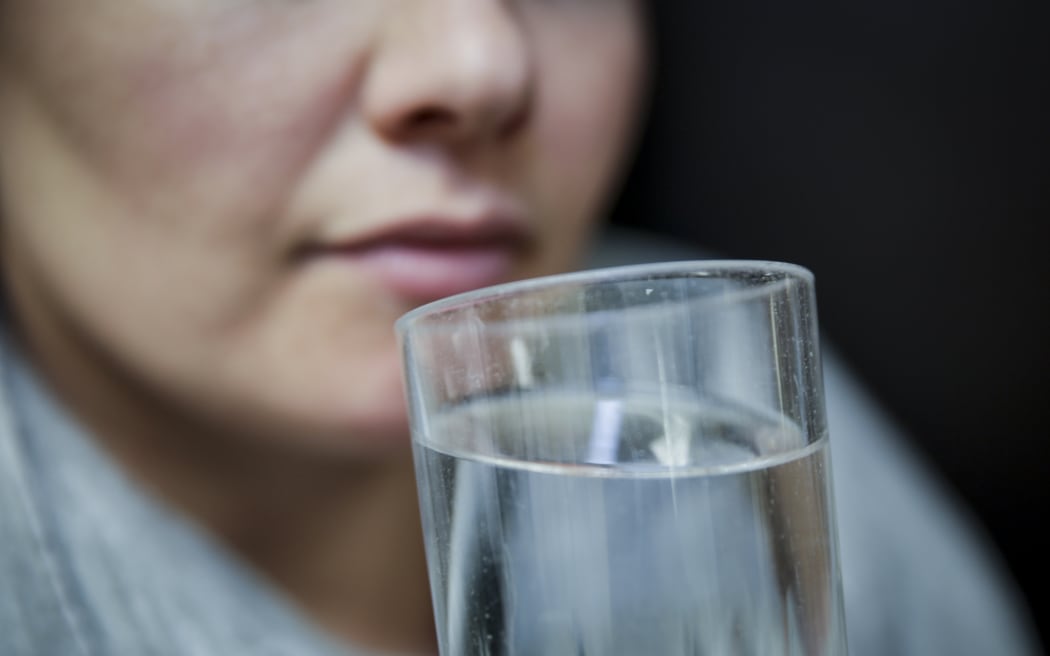
Otago freshwater expert Marnie Prickett says people need to consider more the process of how we get water to our taps. (File image) Photo: RNZ/Rebekah Parsons-King
Otago freshwater expert Marnie Prickett said protecting communities' drinking water started with protecting the water at its source.
"I think we think of drinking water as kind of separate from the natural environment somehow; we think of our drinking water as the thing that comes out of the tap and we're not thinking about the fact it's fallen from the sky, rolled down over the land, into a river and down into the groundwater," Prickett said.
"We somehow disconnect those two things but our drinking water is intrinsically connected to our waterways, and their health is our health.
"When we're thinking about managing drinking water we can't just switch contaminants off into that water straight away, we have to think well in advance.
"In some cases, it can take years if not decades for that nitrate to work its way through the system.
"Nowhere in the country should be managing to that drinking water standard, because impacts on our natural environment start occurring at much much lower than that 11.3mg/L."
Canterbury Regional Council said it had long recognised there were high nitrate concentrations in groundwater in the region, and was continuing to work closely with other agencies and landowners on this.
This included imposing strict regulations on farming practices and nitrogen loss to water and setting nitrogen leaching limits on individual farms.
